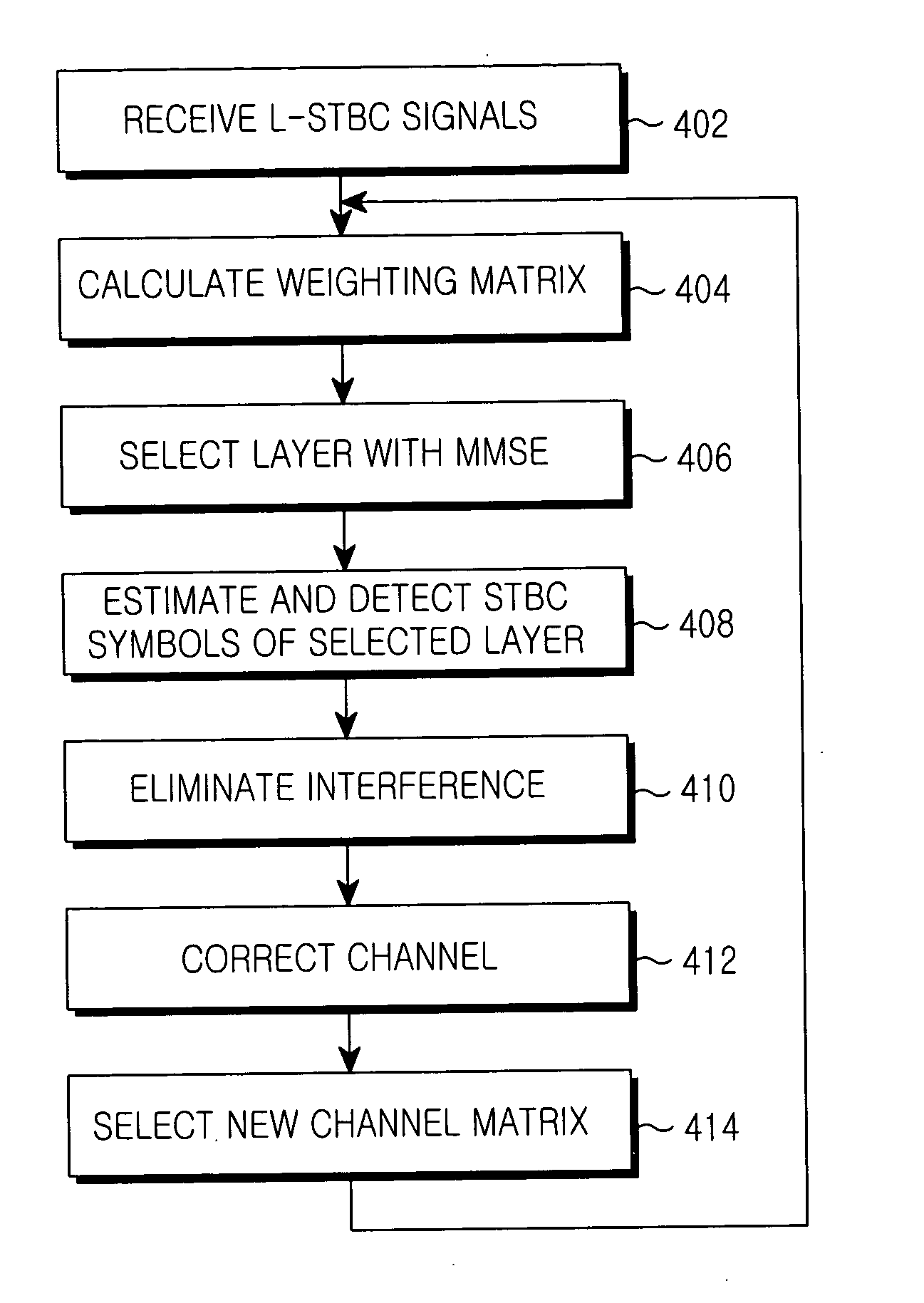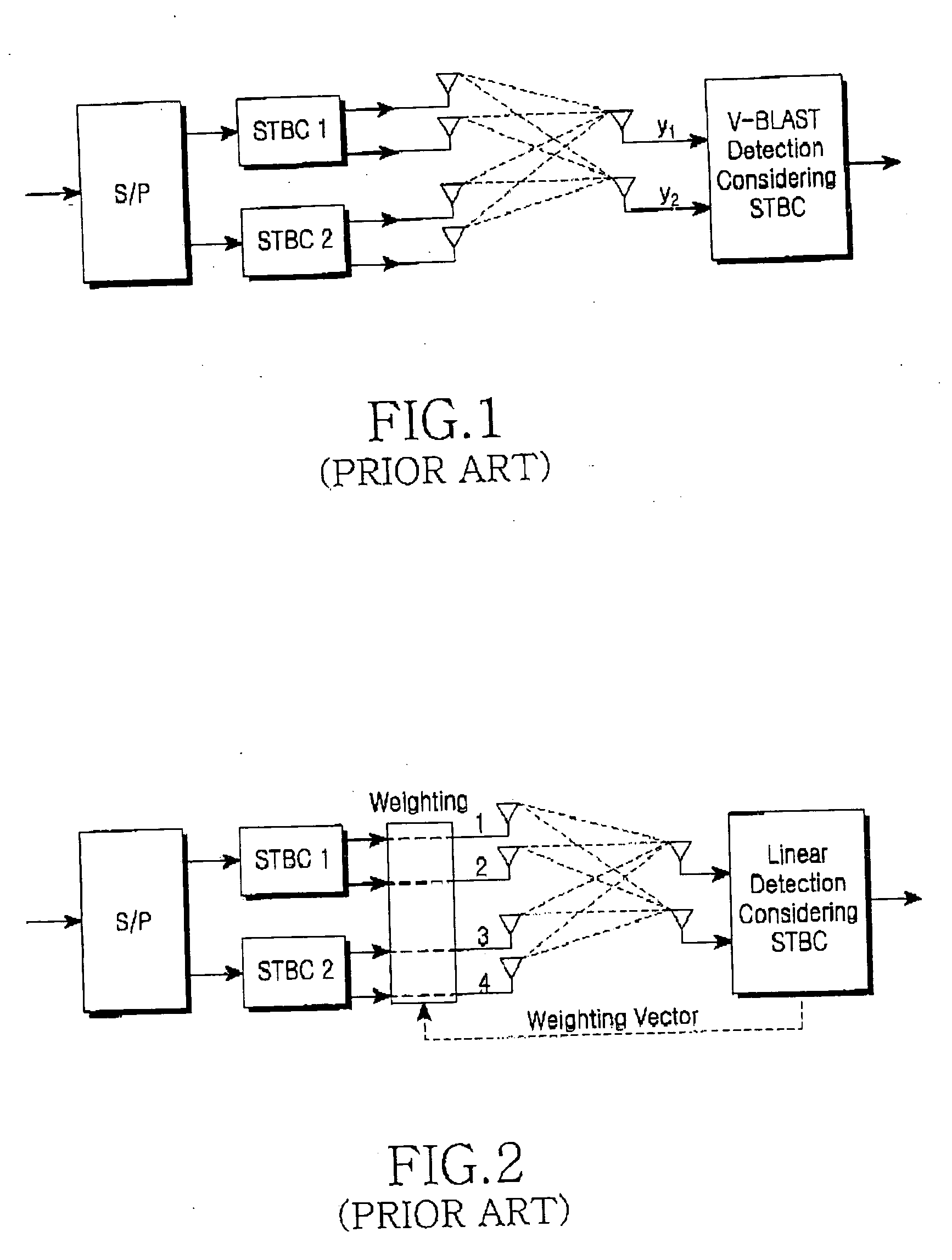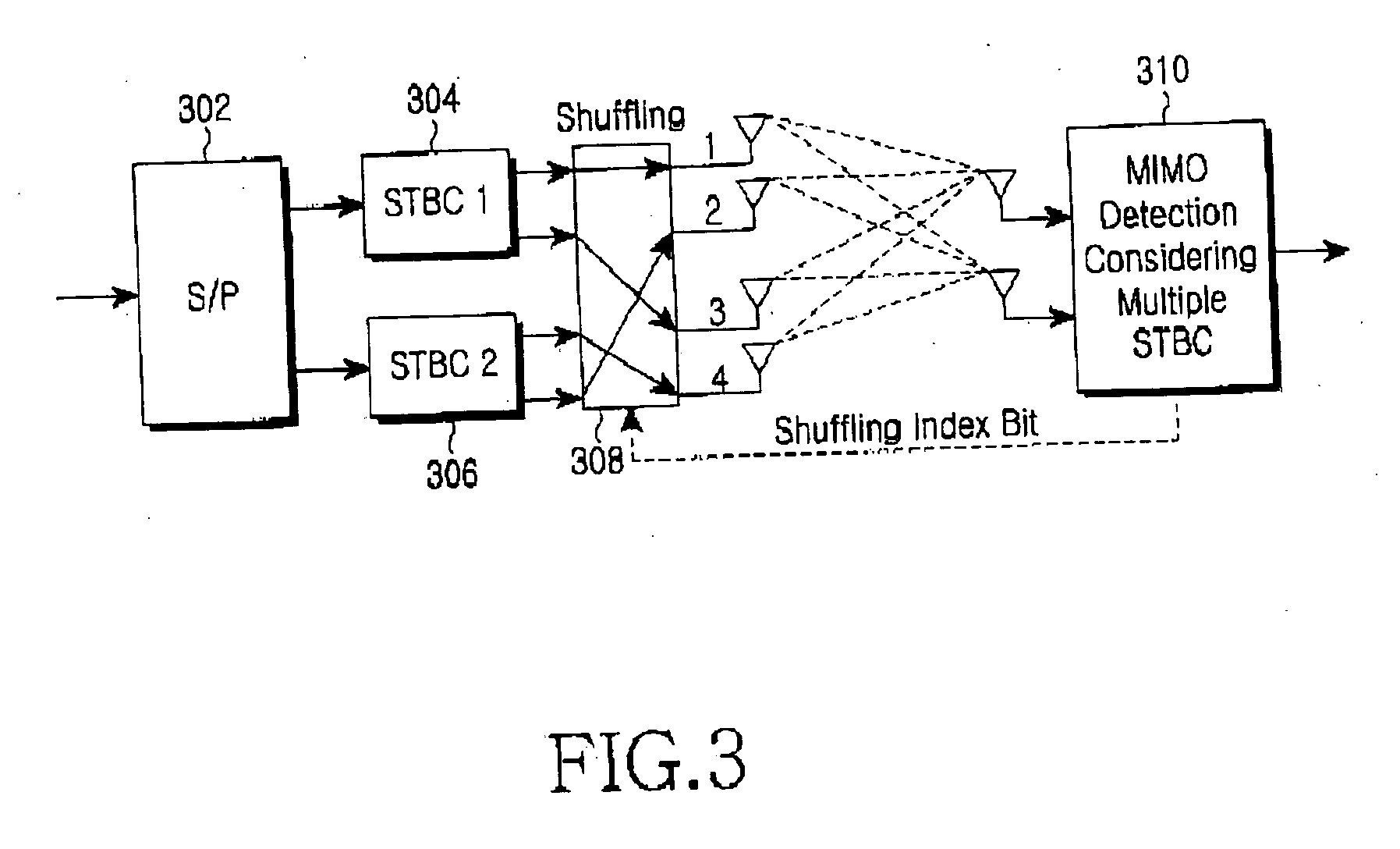Method for feeding back antenna shuffling information in a multiple-input multiple-output system using a multiple space-time block coding technique
a technology of multiple space-time block and antenna, applied in diversity/multi-antenna systems, digital transmission, polarisation/directional diversity, etc., can solve the problems of increasing the complexity of the receiving terminal, and the conventional mimo system that feeds back a weighting matrix is inappropriate for correlated channel applications, so as to improve channel performance
- Summary
- Abstract
- Description
- Claims
- Application Information
AI Technical Summary
Benefits of technology
Problems solved by technology
Method used
Image
Examples
first embodiment
[0059] On the basis of the above Equation 14, the receiving terminal in accordance with the present invention detects signals according to all of the shuffling combinations q of all of the layers l. However, when a process for eliminating each layer's interference component is repeated in the BLAST technique for sequentially eliminating an interference component from a received signal and detecting a true signal, a mean value of MSE values is reduced.
second embodiment
[0060] In a second embodiment, the MMSE between all of the layers are not produced. The quasi-optimum shuffling information method for obtaining only the MMSE of a first layer is expressed by the following Equation 15. select antenna shuffling index q s.t.minq(min[diag{(Sq,k_0HSq,k_0)-1}]),(ZF)∀q.minq(min[diag{(Sq,k_0HSq,k_0+σ2I)-1}]),(MMSE)∀q.(15)
[0061] It can be seen that the number of computations required for the above Equation 15 is less than that of the above Equation 14.
[0062] (2) Number of Shuffling Combinations and Table Generation Method
[0063] When the number of Tx antennas is T, the number of shuffling combinations are T!. That is, when the number of Tx antennas is 4, the total number of shuffling combinations is 4!, that is, [1 2 3 4], [1 2 4 3], [1 3 2 4] . . . [4 3 1 2], and [4 3 2 1]. The number of combinations is reduced according to the following characteristics associated with the MSE.
[0064] Characteristic 1: Permutated STBC blocks have i...
third embodiment
[0074] A shuffling information acquisition method in a 4×2 L-STBC MIMO system in accordance with the present invention will be described.
[0075] A method for acquiring optimum or quasi-optimum shuffling information in the receiving terminal has been described with reference to the above Equations 14 and 15. A method for acquiring shuffling information which requires fewer computations than the above Equations 14 and 15 will be described.
[0076] First, λ∝|h1,1h2,2−h1,2h2,1+h1,3h2,4−h1,4h2,3| is induced from the above Equation 4, and the following Equation 16 can be defined from the above Equation 11.
Hq=HPq=└Hq,1 Hq,2┘qε{1,2, . . . 6} (16)
[0077] In the above Equation 16, a matrix H has a size of 2×2, and a matrix Pq has a size of 4×4. Accordingly, in the induced λ∝|h1,1h2,2−h1,2h2,1+h1,3h2,4−h1,4h2,3|, h1,1h2,2−h1,2h2,1 can be distinguished by means of Hq,1 and h1,3h2,4−h1,4h2,3 can be distinguished by means of Hq,2. When T=4, the above Equation 15 can be simply expressed by the fol...
PUM
 Login to View More
Login to View More Abstract
Description
Claims
Application Information
 Login to View More
Login to View More - R&D
- Intellectual Property
- Life Sciences
- Materials
- Tech Scout
- Unparalleled Data Quality
- Higher Quality Content
- 60% Fewer Hallucinations
Browse by: Latest US Patents, China's latest patents, Technical Efficacy Thesaurus, Application Domain, Technology Topic, Popular Technical Reports.
© 2025 PatSnap. All rights reserved.Legal|Privacy policy|Modern Slavery Act Transparency Statement|Sitemap|About US| Contact US: help@patsnap.com



